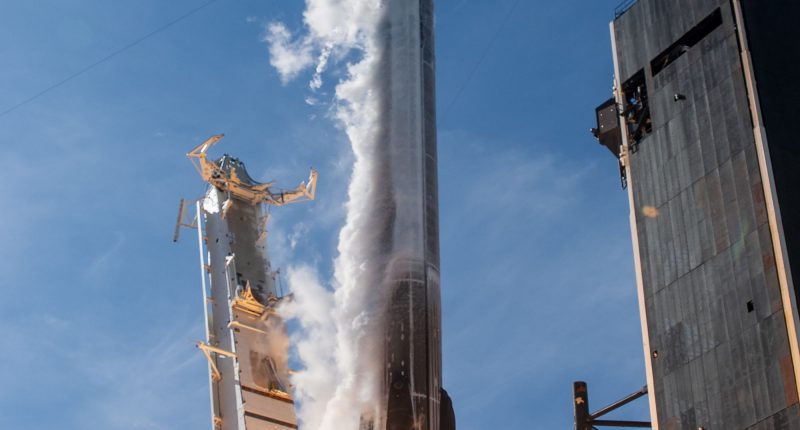On Sunday, SpaceX’s Falcon 9 rocket took off from the Kennedy Space Center in Florida with a new and improved Dragon capsule spacecraft, to complete its 21st Commercial Resupply Services (CRS) mission for NASA to the International Space Station. This launch marked the 100th successful Falcon 9 take-off for the company, of which 43 were flown by the company on recovered and refurbished boosters.
SpaceX used a new variant of Dragon capsule spacecraft with greater carrying capacity and with the capability to dock autonomously with the Space Station. The capsule would autonomously dock with the Harmony module of the ISS. NASA astronauts and Expedition 64 Flight Engineers Kate Rubins and Victor Glover would monitor the docking operations.
Liftoff! pic.twitter.com/pgk24cph9e
— SpaceX (@SpaceX) December 6, 2020
The Dragon capsule has successfully detached from the Falcon 9 rocket’s second stage. It is expected that the updated Dragon would reach the International Space Station (ISS) on Monday, according to a NASA statement.
Onboard the capsule are critical supplies, equipment, and material to support multiple science and research and experiments on the ISS. It will deliver more than 6,400 pounds of science investigations and cargo. According to a report from AP, the 2,900 kg shipment is carrying billions of microbes and crushed asteroid samples for a biomining study, a new medical device to provide rapid blood test results for astronauts in space, and a privately owned and operated chamber to move experiments as big as refrigerators outside the orbiting lab. It also has 40 mice onboard which will be used for bone and eye studies. It also has personal Christmas presents for the four Americans, two Russians, and one Japanese astronaut. The Dragon capsule also has roasted turkey, cornbread dressing, cranberry sauce, shortbread cookies, and tubes of icing for the Christmas feast of the astronauts.
The capsule is expected to stay at the ISS for one month before undocking and reaching the Atlantic. This is also a change in program as the previous capsules used to parachute down to the Pacific Ocean. Returning closer to Cape Canaveral will save recycling time.
The Tech Portal is published by Blue Box Media Private Limited. Our investors have no influence over our reporting. Read our full Ownership and Funding Disclosure →






